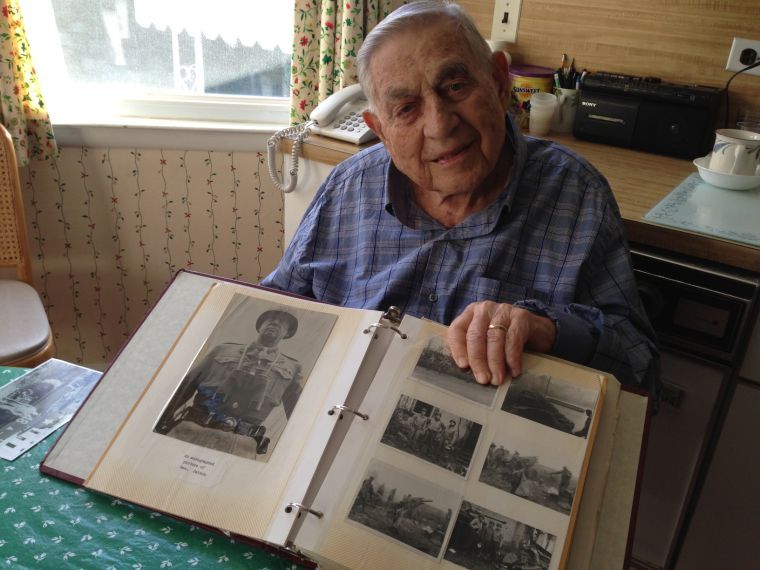Plandome Heights resident Lawrence Kaplan received five battle stars for his nine months of continuous combat during World War II.
The 98-year-old also has an autographed picture of General George S. Patton laminated in a binder filled with memorabilia from his military service.
“He used to visit our different divisions,” said Kaplan, who worked under Patton in the army’s 6th Armored Division in Europe. “I would work in the division office and got to talk to him occasionally.”
Kaplan fought at Normandy, Northern France, the Rhineland, the Bulge and Central Europe, tasked during the war with photographing and mapping enemy positions so Air Force personnel could bomb the region and allow troops on the ground to advance. He was also part of the Allied forces that helped liberate the Buchenwald Concentration Camp in 1945.
For his accomplishments on the battlefield, Kaplan later received the New York State Conspicuous Service award, a citation from the Republic of France for “Liberation From German Domination,” and was profiled by Who’s Who in America.
Kaplan’s awards, his stars and his autographed picture of Patton are all tucked away in a binder compiled by his wife, Jeanne, after they were married in 1945.
But when Kaplan first met Patton, the general had already amassed the rock star celebrity that follows his name to this day.
By that point in the war – which Kaplan said he couldn’t even pinpoint due to the frequency with which the 6th Armored Division toured Europe – Patton had taken to carrying around autographed photographs and handing them out wherever he went.
One of the photographs went to Kaplan.
“I guess he had a bunch of them in his hand and he handed me one and I accepted it,” Kaplan said. “It was not for any particular service I performed or anything like that. He just generally passed them out to people standing there, and I happened to be standing there and I was handed one.”
Kaplan also said he could not remember where the division was stationed when Patton handed him the photograph.
“In 10 days, my division covered 250 miles, easily,” he said. “You ask me specifically where I was on any particular day, I couldn’t tell you. On any given night, you unpacked for sleeping and that was it.”
Kaplan was drafted into the military in 1942 and was sent to officer training school at Lafayette College in Pennsylvania. His classmates there included former Secretary of State Henry Kissinger, former U.S. Sen. Frank Church and former West Virginia Gov. Arch Moore.
Kaplan joined the 6th Armored Division at Batsford, England, the division made a 10-day, 250-mile trip on the Brittany Peninsula to help surround the German base at Brest, capturing 5,000 Nazis along the way while suffering light casualties.
“The entire campaign was a complicated, leap-frogging affair,” according to a Stars and Stripes newspaper account from that time. “Gen. Grow’s men sometimes surged forward so rapidly that they found themselves operating beyond areas covered by the maps in hand.”
Later in the war, the 6th Armored Division was assigned to help liberate the 101st Airborne Division surrounded by German forces in Belgium at Bastogne.
The division traveled overnight on Christmas Eve of 1945 through one of the harshest winters in Belgium’s history.
“At one point in our travels, we saw a house that looked warm and lit-up from the outside. We knocked on the door and how lucky were we that it was a nunnery,” Kaplan said. “They welcomed us inside and gave us their beds, and they took heated bricks and wrapped them in blankets and put them next to our feet to warm our frozen toes.”
What initially seemed like a great victory for German military aggression during the war, Kaplan said, ended as one of the more historic Allied wins as part of what is now known as the Battle of the Bulge.
“We were not in a direct line of fire, but we were always in fire because we were always going through enemy territory,” he said. “There were always enemy sharpshooters in every town aiming at us. In that sense, we were not safe anywhere.”



